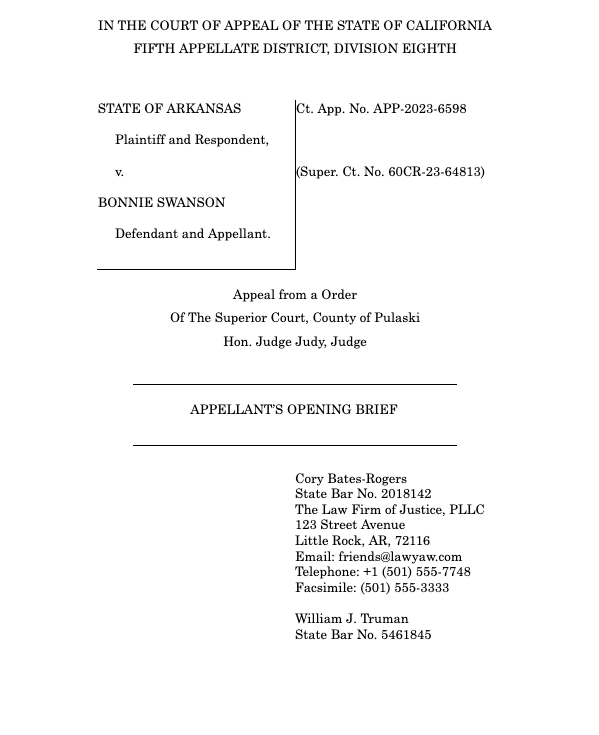Legal writing is a crucial skill for any legal professional to have. Throughout their career, lawyers write thousands of documents for different audiences including clients, other lawyers, court officials and more.
As such, learning how to write effectively and persuasively as a lawyer will go a long way. An example of this is when writing a legal brief—which is one of the most important court documents a lawyer will write.
Writing an effective brief includes identifying the issues in a case, citing to proper authority, and crafting a legal argument. Lawyers also need to properly organize the information within a legal brief cohesively.
A legal brief template can help you write more effectively and eliminate the need to start from scratch each time. (For example, with Clio Draft, you can easily convert your Word docs into dynamic legal templates and cut time spent on routine legal drafting by 80%! Request a demo to see how it works.)
What is a legal brief and why is it important?
A legal brief is a document that argues your side over the other party’s. It details why your client should win or have a motion granted by the judge or other court officials. This is a crucial document as it provides contextual information for officials before a potential court appearance, and a platform for your argument.
Depending on how you write a legal brief, it could help or harm a case before you even step into the courtroom. Therefore, it’s important for any lawyer to understand what a legal brief is, how to structure one, and how to always write an effective argument. A legal brief template can help make sure you always capture key elements in your legal brief.
How do I write a legal brief?
A legal brief template will provide a good structure to get you started, but you still need to write the brief. Here are a few tips to keep in mind while completing the brief:
- Unlike client documents, a legal brief is written for court officials. This is where your use of legalese will come in handy.
- Before you submit your legal brief to court officials, it’s wise to have a more senior colleague proofread your work to catch any typos, grammatical issues, or any other errors.
- Be professional and concise in your language. A legal brief should be just that—brief. Remember to be succinct and resist the urge to highlight every single aspect of the case.
- Be persuasive with your writing, and don’t use passive language.
There is no quick or easy way to become an expert in legal writing. Ultimately, your writing skills will improve with practice, time, and reading other legal professionals’ briefs for reference.
What is included in a legal brief?
A legal brief should include:
- The name of the case.
- The names of the parties involved.
- The current stage of litigation.
- The legal issue being addressed.
- Relevant facts of the case.
- The rule of law applied.
- Your argument.
- A conclusion.
The name of the case
This section is relatively straightforward—every legal brief starts with the name of the plaintiff and defendant, formatted as: plaintiff v defendant.
The names of the parties involved
Clearly state who the plaintiff and the defendant are. You may also choose to abbreviate their names to just P or D.
The current stage of litigation
Identify the current stage of litigation in this case. Is this currently at trial or an appeal? What level of court, e.g., state or federal? And at what stage did this legal issue arise? Only include these details if they’re applicable.
The legal issue being addressed
This section where you identify the legal issue that is being addressed in court. Essentially, you have to state the reason why both parties are coming to court.
Relevant facts to the case
This section is the main part of your legal brief and should include any relevant facts to support your argument for the case.
This is where many first time lawyers struggle, but keep in mind that quality beats quantity. The key for this section is including relevant facts. Don’t include every single fact of the case, especially if it’s insignificant.
Rule of law applied
Identify any rules of law applicable to the case. This can range from well-established negligence rules such as the reasonable person standard, or in certain cases, the court can choose to implement a new, unprecedented rule depending on the case.
Argument
This section is where you article your argument and side of the case. This can include using the rule of law applied by the court to the facts listed previously in the brief to support your argument.
Conclusion
Summarize your document with a brief conclusion.
What is the difference between a legal brief and a legal memorandum?
Legal memo and legal briefs appear to be similar in structure. However, the purpose of these documents and the audience they’re written for are different.
Legal memos are versatile and can summarize legal issues for clients, partners, other legal professionals, or court officials. They can also be relatively informal.
However, legal briefs are almost always exclusively court documents presented to judges or other court officials. You need to be more persuasive in your writing and learn how to structure an argument in a legal brief compared to a legal memo.
Legal brief template
To help you out, we have put together a legal brief template, below. You can download it and you can use as a starting point.
Just remember—a legal document template is just an ideal starting point. Use it as a guide, but be sure to make it your own.
Final thoughts on legal brief templates
Throughout your career as a lawyer, you’ll have to write many legal briefs. But that also means you’ll have ample time and practice to refine your legal writing skills. Depending on how it’s written, a legal brief can either help or harm your argument. It’s an important part of your pre-court preparation and is well-worth a time investment.
Learning how to write an effective legal brief takes time and practice. A legal brief template can help you get started and also hone your writing skills.
Want more legal document templates? Be sure to check out our legal template hub.
The Essential Guide to Legal Document Automation
Get all the tips and best practices for evaluating, implementing, and adopting legal document automation software solutions.
Get the Guide



